- Navigation
- Back To Wisconsin


Drugs and Law
Most governments prohibit drugs except under a license that must be possessed to manufacture, produce, supply, posses and consume most all substances which can be recognized as drugs. This is in convention with several international treaties.
Psychoactive drugs are classified and regulated in the USA in a schedule system. Drugs can be put into any one of five schedules with schedule one being the most controlled group and schedule one is the one with least control. Schedule one drugs cannot be prescribed or used medically under federal law whereas drugs in any other ones of the schedules may be used by a doctor.
Drugs in Schedule One
Drugs in schedule one must have particular characteristics. The drug must have a higher potential for abuse than most, it must not be not have any accepted medical use in the United States and the drug must be unsafe or has not been proven to be safe under medical supervision. Schedule One drugs cannot be prescribed and are illegal to trade, buy, produce, supply and possess.
Drugs which are schedule one include MDMA (Ecstasy), LSD (Acid), Cannabis (Marijuana), DMT, Peyote and Heroin amongst others.
Drugs in Schedule Two
Drugs in schedule two are considered to have a high abuse potential like drugs in schedule one. However, they must have some sort of accepted medical use in the United States of America with severe restrictions. Abuse of these drugs could lead to psychological and physical consequence like dependence. These drugs can be prescribed by a physician or a nurse.
Some drugs in schedule two include cocaine, morphine, opium, amphetamines, PCP and Hydrocodone among others.
Drugs in Schedule Three
Drugs in schedule three are less likely to be abused than the drugs in the higher schedules and have an accepted medical use in the United States. If the drug is overused then it might lead to a mild physical dependence and a high psychological one. These drugs can be prescribed by a doctor or nurse and can be refilled using prescriptions over the phone.
Some drugs in schedule three are Marinol which is synthetic THC, Ketamine and LSA along with anabolic steroids.
Drugs in Schedule Four
Drugs in schedule four are not very likely to be abused comparatively to the drugs in schedule three, are currently medically accepted in the United States of America and their overuse could lead to mild psychological and physical dependence.
Drugs in schedule can be prescribed by doctors and nurses and can be bought with prescriptions over the phone.
Some drugs on schedule four include valium, xanax, klonopin, Librium and rohypnol.
Drugs in Schedule Five
Drugs in schedule five must have very low abuse potential in comparison to drugs in schedule four, the drugs must have a currently accepted medical use in the United States and their overuse might lead to very mild psychological and physical dependence compared to drugs on Schedule Four.
These drugs can be prescribed by doctors and nurses and can be bought using the phone with a prescription.
Drugs in schedule five include buprenorphine and pyrovalerone. They also include any other prescription medication which has low quantities of opium or codeine among others.
International Drug Law
International drug law is a very complicated and complex topic with many countries having wildly different drug laws within their territories. However, three treaties that many countries have signed tend to have plenty of influence when it comes to the making of drug laws.
These treaties are The Single Convention of Narcotic Drugs which was signed in 1961 and amended in 1972, The Convention on Psychotropic Substances in 1971, and The Convention against the Illicit Traffic in Narcotic Drugs and Psychotropic Substances in the year 1988.
The first treaty was trying to unify the drug conventions that had passed for the last fifty years and control substances which were based on plants like marijuana, opium and cocaine. This included their derivates. The board knew that opiates were valuable as medicinal resources and therefore created a system in which state parties must submit estimates of their opiate usage for the following year. Soon the International Narcotics Control Board is trying to control the illegal production, traffic, possession and use of narcotic drugs. In 1988 tougher law enforcement and criminal punishment regarding illegal trafficking and producing of psychotropic drugs is encouraged.
Drugs do not fall under the same category in every country. In Portugal, for instance, the use of heroin has been decriminalized. Although if an user has less than one gram on him or herself they will not get arrested they can be referred to mandatory treatment. In Germany heroin is illegal but can be prescribed to addicts that are over twenty-three and have been taking it for longer than five years. In Sweden, heroin users are allowed to take the drug under an ongoing study. Heroin is illegal to take as a recreational drug in the United Kingdom but it is used medically for terminal patients to relieve pain. In Finland heroin is a controlled substance that can be bought and sold with a license.
Cannabis is decriminalized in the Netherlands and although it is classified federally as a schedule one drug that is highly contested by some states. California has effectively decriminalized cannabis possession and use as well as Massachusetts. In North Carolina Marijuana is considered to be schedule 2.
Internationally laws differ. It is decriminalize for personal consuming in Colombia, Costa Rica, Argentina, Belgium and Portugal but it is widely regarded as a dangerous drug in other places. Additionally in the places where personal intake is decriminalized it is still an offense to sell and buy marijuana.
MDMA is illegal to possess in the majority of countries although in Canada it is classified as schedule two and in Egypt it has been qualified as schedule three which means that it can be prescribed by a physician. In Germany and The Netherlands Ecstasy is qualified as schedule 1 and considered to be a hard drug. This is the same in Sweden, The United Kingdom and Norway. In Portugal, like many other drugs, it has been decriminalized. If an user is found with less than 1g they will not be sent to prison but might be sent into treatment.



